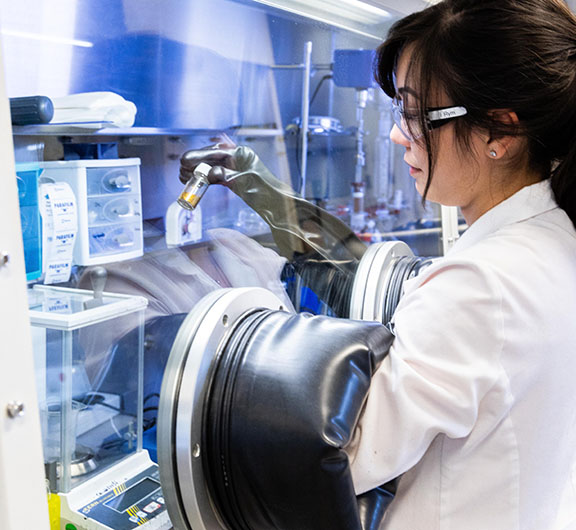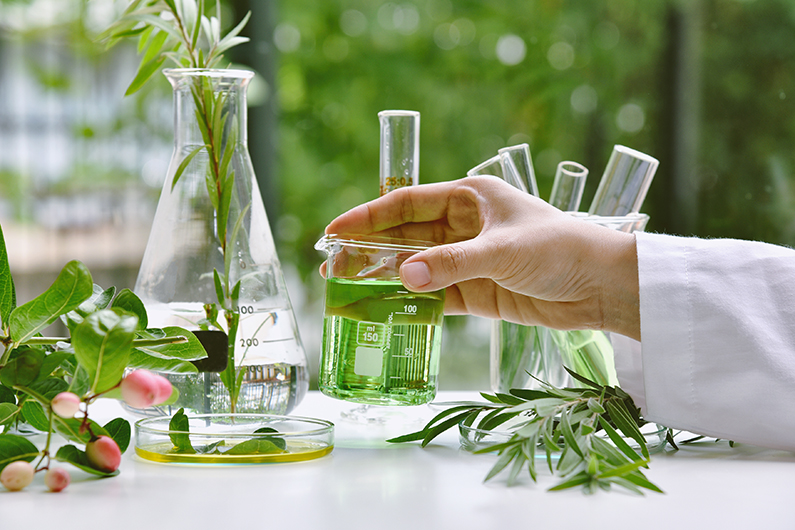More news
- Focus on industrial: Powering the energy industry during extreme heat
- Focus on powder coatings: The coatings industry’s transition to PFAS/PTFE-free solut...
- “We see sustainability as a purpose, as a reason for doing business” – P...
- Focus on industrial: High-performance coating protects tanks at biopolymer production plan...
- Focus on powder coatings: Novel high-speed crosslinking technology

In recent years, the industrial landscape has witnessed a transformative shift with the integration of graphene into many different materials to enhance their properties. Graphene has emerged as a revolutionary material, offering a myriad of benefits to the coatings industry
Carbon Waters, a company created in 2017, explores all the potential of graphene to offer different ranges of ready-to-use performance additives to manufacturers in multiple industries. Its unique process enables graphene to be exploited in unprecedented ways, combining biosourcing and recyclability.
Let’s focus on its brand-new range Graph’Up Oxi that has been developed to preserve coatings and paints from corrosion.
What makes graphene so effective against corrosion?
Graphene is a single layer of carbon atoms arranged in a hexagonal lattice, forming a two-dimensional structure. This structure creates an impermeable barrier that effectively prevents the penetration of corrosive agents such as moisture, oxygen and chemicals. The impermeability of graphene acts as a protective shield, reducing the likelihood of corrosive substances reaching the underlying material.
Today, several anti-corrosion solutions exist on the market, such as zinc-rich epoxy-based paint coatings used as anti-corrosion primers, or those based on hexavalent chromium. Carbon Waters offers greener solutions to traditional anti-corrosion additives through its Graph’Up Oxi range. These products can be used to entirely replace traditional ones, but they can also be used synergistically to achieve better anti-corrosion performance and increase the life of coatings.

READ MORE:
Focus on additives: Bio-based additive materials for the coatings industry
What are the advantages for paint formulators?
Through its various partnerships and collaborations with paint formulators, Carbon Waters has gained great knowledge of the coatings industry and of the manufacturers’ needs. Its unique process allows the production of ready-to-use additives in a liquid form, offering easy integration into the process. Pre-dispersed, the additives present no risk of nano-powder inhalation during the integration into the formula, compared to most graphene-powder-based products currently available on the market.
“Our technology meets the needs of coatings for anti-corrosion properties. For example, graphene is impermeable to water and doesn’t require a high concentration – just a few percents of graphene are enough for an anti-corrosion formulation,” notes Nicolas Castet, COO of Carbon Waters and Graph’Up Oxi Range Manager.
Graph’Up Oxi additives are suitable for a wide range of formulations, in both waterborne and solventborne phases, the latter being more adapted for industrial applications.
The Graph’Up Oxi range has been developed for waterborne formulations. The products perfectly meet the market’s demand, especially for the architectural and building paints industry which are looking for more efficient waterborne formulations in order to replace certain solvent-based formulations.
Besides the anti-corrosion effect, they provide many other benefits, such as anti-scratch, reduced blistering and a protection against UV rays. Also, their low concentration in graphene makes them compatible with transparent varnishes and light-coloured paints.

Graphene performance for anti-corrosion applications: A proven efficiency
Carbon Waters has conducted several tests on the Graph’Up Oxi products through different collaborations with paints and coatings formulators.
The following test has been carried out on a waterborne formulation. A comparison has been made between the paint enriched only with a traditional additive, the paint enriched with graphene (Graph’Up Oxi W) and the paint enriched with both additives (traditional + graphene-based).

Test conditions: 50 µm DFT, ISO 9227 neutral salt spray
As shown in this test, the formulation enriched with Graph’Up Oxi W demonstrates anti-corrosion performance equivalent to that of the formulation enriched with a traditional anti-corrosion additive, at lower concentrations. When Graph’Up Oxi and the traditional additive are used synergistically in the formulation, anti-corrosion performance is significantly improved.
Another test has been conducted to assess the effectiveness of graphene alone on a waterborne acrylic paint.

Test conditions: 50 µm DFT, ISO 9227 neutral salt spray
As we can see, formulations enriched with Graph’Up Oxi W have a significantly higher corrosion resistance than paint alone. In addition, a reduction in blistering and better adhesiveness have been observed.
READ MORE:
Low environmental impact
Compared to other anti-corrosion additives that are traditionally used in the industry, Graph’Up additives are more sustainable and safer for health. The use of graphene-based additives can contribute to reducing the environmental impact of corrosion protection thanks to the reduction of the need for frequent recoating, lowering overall material consumption.
What’s more, graphene has no proven toxicity, the opposite of certain traditional anti-corrosion additives (i.e. zinc-based). This is why many of them are now controlled by European REACH regulation, which promotes the use of safer chemicals. A carbon-based material, graphene is aligning with the industry’s growing emphasis on sustainable and environmentally friendly solutions.
As for Carbon Waters process, it consumes few resources, has a low carbon footprint, and incorporates the recyclability of raw materials. To take things a step further, the company is working on the possibility to use carbon-based raw materials such as biochar or graphite obtained as a co-product of a responsible industrial process.
Using graphene for other applications in the coatings industry
The great properties of graphene do not make it only interesting for anti-corrosion application. Carbon Waters is developing other ranges of additives, such as Graph’Up Preserv, an anti-clogging additive ideal to protect paint film by reducing the adhesion of dirt from atmospheric pollution as well as soiling by microorganisms. When incorporated into a paint formulation, Graph’Up Preserv reinforce the film and delay the appearance of dirt, thus affording lasting protection to outdoor coatings.
Graphene also shows great interest for applications in the marine industry, especially antifouling. It prevents the attachment of marine organisms to ship hulls. Fouling, the accumulation of organisms such as barnacles, algae, and other marine organisms on the hulls of ships, can lead to increased drag, fuel consumption and maintenance costs. Carbon Waters is currently developing another range of graphene-based additives to tackle this issue.
In conclusion, the integration of graphene into coatings and paints marks a significant advancement for the industry. Its multiple properties position it as a game-changer across various sectors. A company specialised in graphene, Carbon Waters exploits this potential to offer a series of graphene-based performance additives that are ready-to-use and contribute to a more resilient, efficient, and environmentally conscious industrial future.

For any information about Carbon Waters and our ranges of products for the coating industry, contact us: nicolas.castet@carbon-waters.com
Main image caption: Graphene production process







